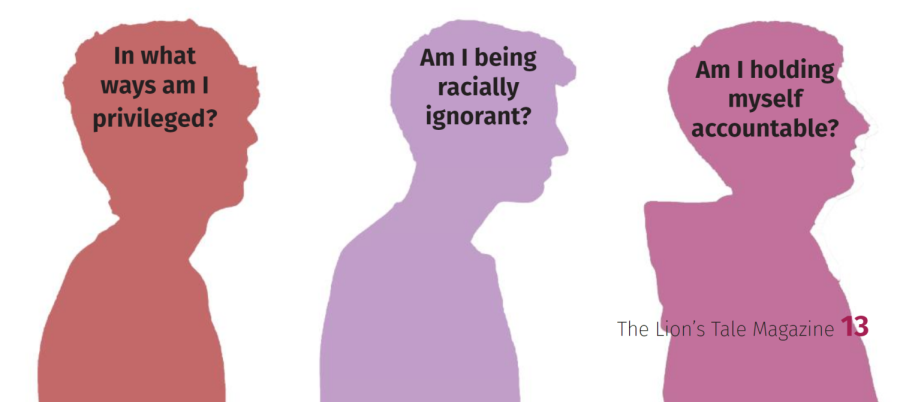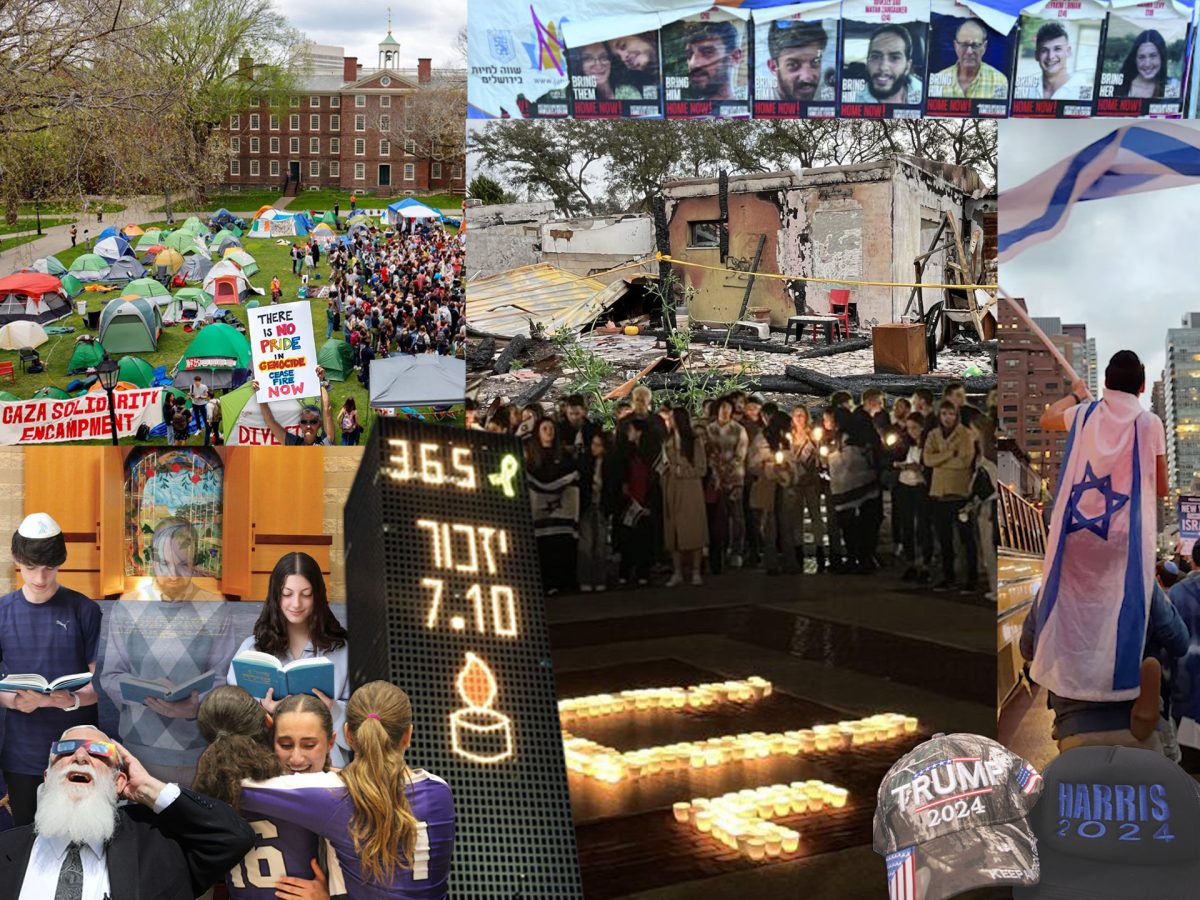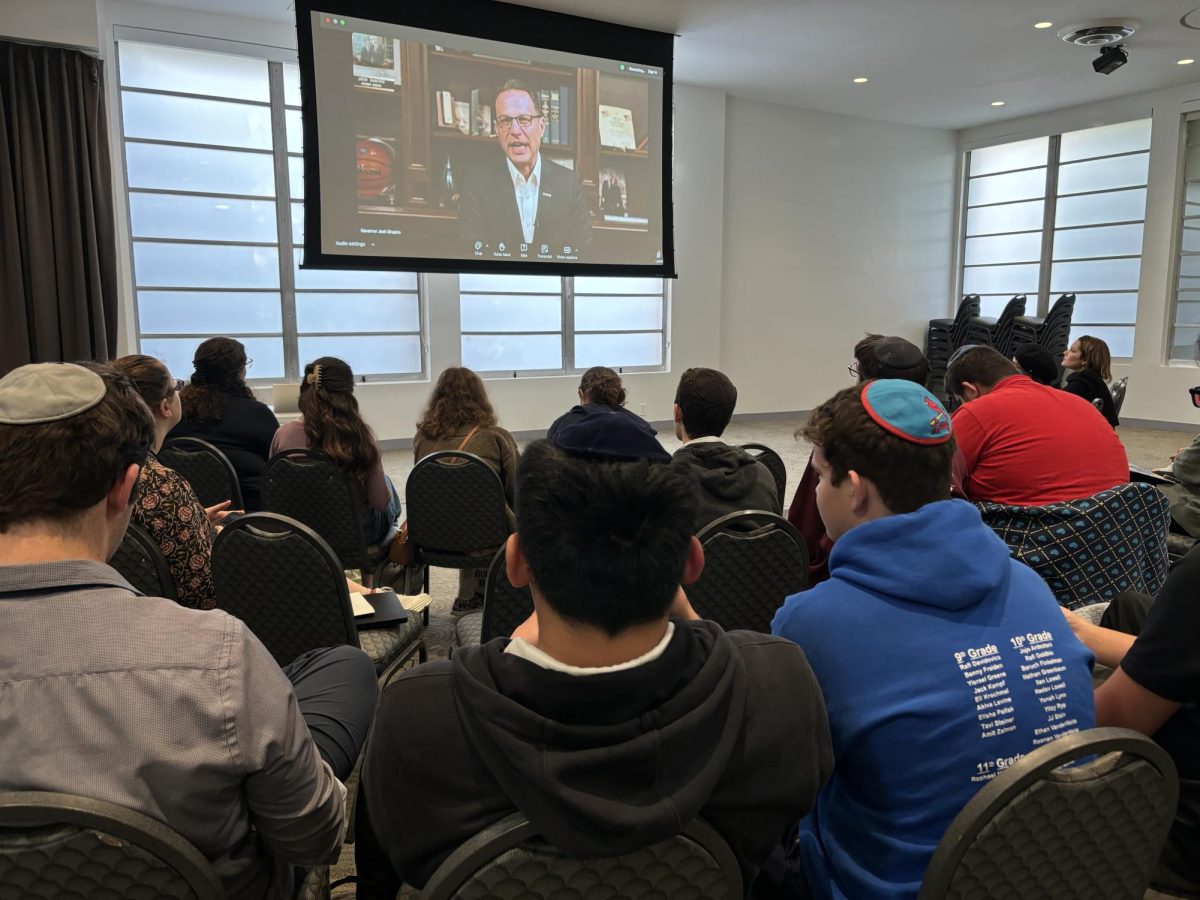In the wake of continuous incidents of police brutality, the United States is currently undergoing a racial reckoning and examining the history and impact of systemic racism. Many institutions, including Jewish ones, are reassessing their policies and practices in an attempt to reduce their contributions to racial inequality. CESJDS is no exception. Between guest speakers, faculty workshops, curricular changes and grassroots organizations, the Jewish community continues to ask: are we doing enough to promote a racially just world?
Diversity at JDS
Hundreds of students mill about the halls, voices and laughter intermingling as they make their way to their next class. They are a sea of Jewish students, so many of them are members of the same demographic.
Freshman Darya Dayanim said that it is challenging for JDS to be racially diverse because most of the Jews living in this area are white.
“It’s hard with a Jewish school and with a religion that’s majority white…” Dayanim said. “I’m super proud that I go to JDS, but at times it’s an insecurity of mine that we go to a school that’s kind of in a bubble.”
Although JDS is not racially diverse, it still hosts other forms of diversity that many say are crucial such as country of origin, socio-economics, and degree of religious observance. These other forms of diversity can expose students to different backgrounds and enhance their understanding of Jewish identity.
“Our compilation is more diverse than what we actually think, just by the way of the languages that we are talking in the home and the different cultures that people have in their homes,” Spanish teacher and Upper School Diversity, Equity and Inclusion Coordinator Deby Kijak said. “But we do look more homogenic than other places and that’s because of the nature of the school—we are a Jewish day school.”
Kijak said that although JDS is limited in racial diversity, it employs creative methods to embrace other types of diversity. As Upper School Diversity, Equity and Inclusion Coordinator, Kijak has implemented several new diversity measures.
For example, Kijak advises the high school diversity club, which has led two “lunch and learn” sessions for the high school student body. Additionally, she coordinated assemblies where author and activist Marra Gad spoke to the Upper School. She also worked with Assistant Dean and high school math teacher Tori Ball to implement two advisory sessions where students learned about microaggressions and the social media movement @Black, which encourages Black students to speak up about discrimination they face in school.
In addition to student opportunities, Kijak leads the Upper School Diversity Committee where teachers meet throughout the year to discuss issues relating to inclusivity in the school. She also works with Lower School language arts and social studies coordinator Kim Sherk to organize professional development opportunities for teachers to learn about race and bias.
For the most recent professional development day, Kijak organized for Virtual Equity Officer Keith Hinderlie to lead a workshop for the staff and administration on implicit bias training.
Kijak said that it is important to approach diversity in a way that extends beyond the school’s demographics and for members of the JDS community to take these initiatives into account when they discuss the school’s diversity.
“We want to think about diversity as an organic process and we want to look at our initiatives and our programs,” Kijak said. “We don’t want to look at the faces or at numbers, how many people of color we have, how many faculty of color or staff in the school. We want to think in terms of how organically we are approaching diversity.”
Climate at JDS
A characteristic of going to a predominantly white school is that students do not have the same kind of exposure to racial, ethnic and socioeconomic diversity that other American students do. Though it does not stem from a place of blatant hatred, this lack of exposure can contribute to general ignorance towards those whose demographics differ from those of the typical JDS student.
“In the halls… you can hear some [ignorant comments]. Specifically the guys at JDS, I’ve heard some iffy jokes,” junior Maia Zimmers said. “I remember in eighth grade… the security guard came to talk to us about racial discrimination because he himself is Black and … about how he’d heard the n-word around school and just some not great stuff. I don’t know if everyone at JDS understands how privileged we are, and people make really dumb jokes sometimes.”
Junior Eva Schwartz acknowledges that it can be hard to understand the experiences of other demographics, and she has also heard JDS students make offensive claims out of ignorance. Schwartz aims to be conscientious and believes that “checking one’s privilege” is vital in order to prevent ignorance.
“People need to start being more aware of what they say, which is easier said than done, but it’s important to know that other people go through different experiences than you do and that you need to be sensitive to that,” Schwartz said.
Uprise, a consulting company for social justice and human rights organizations, works to ensure that those on the front line are pursuing the most efficient paths to accomplish their goals. Uprise’s Chief Strategy Officer and Partner Ginna Green believes that Jewish day schools have a crucial role in promoting racial justice within the Jewish community.
“Jewish day schools in many ways are some of the last bastions of racial ignorance within the Jewish community…” Green said. “Day schools really must figure out ways to talk about our shared future, to talk about justice, talk about history in a real and meaningful way that allows us to know what really happened, allows us to recognize how the mistakes of the past have brought us to the harm of the future. And it doesn’t need to be political—facts and history don’t need to be political.”
Curriculum changes
In recent years, JDS has tried to address the lack of diversity in their curriculum. The school added books from more diverse authors to the English curriculum, created a class focused on race in the United States and tried to diversify their Jewish History curriculum.
This year, the English department incorporated “The House on Mango Street,” which had previously been taught in middle school, into the freshman curriculum. It explores a young girl’s identity, including her Mexican American heritage. The English department also plans on introducing more books written by Black, Indigenous and people of color (BIPOC) into the sophomore curriculum.
The high school English department had a three-hour-long meeting about each grade’s curriculum to discuss how to diversify it. During these meetings, they tried to find books that are diverse, provide an opportunity to teach skills and fit into the theme of the curriculum.
“It’s been a longer conversation,” English teacher Melissa Tomanelli said. “We ended up having other goals in the last couple of years and other things we were working on. And finally, really, we have to sit down and actually find some time to do this because it is very time-consuming to overhaul your curriculum.”
English teachers also have to think about how to discuss themes of diversity when they create lesson plans for these new books. One way the English teachers do this is by incorporating secondary sources like Ted Talks, videos and articles into lessons.
“It’s just a matter of trying to engage other voices and also trying to kind of recognize what are our limits when reading this based on our own experiences and how we can kind of step outside of how we usually perceive things,” Tomanelli said.
Some students do not think this change does enough to address social issues. For example, freshman Alex Burton thought that while “The House on Mango Street” did add a new perspective, there could have been better books to highlight the Latinx community better.
“It definitely brought a different voice to the table and you saw an 11 or 12 year old girl in her narrative and her life…. I think it definitely brought up poor communities, that was something to learn about, but I think there are better books to highlight social justice issues,” Burton said.
The history curriculum also aims to address race and teach the history of different groups.
History teacher Dr. Eytan Apter along with other teachers started developing a curriculum around race for middle school students around seven years ago after attending a seminar on race and membership. They originally integrated it into the eighth-grade government class and touched on how race interacts with education, policing and prison.
During the 2019-2020 school year, a unit on race became part of the Humanities Experience class which allowed more freedom for the curriculum. When the race unit was part of the social studies curriculum, it had to tie back to the government and the choices people in power made.
The curriculum for the unit on race is constantly updated based on what is going on in the world. For example, following the death of Ahmaud Arbery, they shifted the discussion of lynching from describing it as an historical issue to an ongoing one.
“We have to be reflective about the curriculum to meet the needs of our students and the needs of the time,” Apter said. “And we saw that last year and we saw that the year before, and as we see more things, we adjust our curriculum. Like what do our students need to know in order to understand this?”
The Jewish History department has also been trying to address diversity especially with their junior curriculum as their freshman and sophomore curriculums focus mainly on pre-diaspora and Ashkenazi Jews.
“A big goal of the modern Israel curriculum in the 11th grade is to basically say here is a provocation between Jews from different parts of the world,” Jewish History teacher Dr. Daniel Rosenthal said. “In some ways, for the very first time that we’ve had this many Jews from this many different parts of the world, descending on one specific place all at the same time, and there are still growing pains.”
Though the curriculum has become more diverse over the years, some students feel that it could have been more diverse.
“I think that obviously this year JDS tried to work on [diversifying their curriculum], but this was the first year that I saw that diversity in my classes,” junior Naomi Stillman said.
Jewish organizations working to combat racism
In their continued pursuit for racial justice, several Jewish organizations are working to combat racism within the Jewish community and the wider world. While the individual methods of these organizations differ, they each share the ultimate goal of pursuing racial equity for everyone.
Jews in ALL Hues is an independent organization that works to advocate for Jews of color and multi-heritage Jews. They partner with other Jewish organizations to educate about racism and intersectionality. Additionally, they provide workshops to Jewish organizations about diversity, equity and inclusion.
Some workshops focus on the background of racism and white supremacy, while others delve into the organization’s internal dynamics that contribute to racism.
“[The workshops are] not a full scale plan but just really looking at certain areas where they can make some difference…” Jews in ALL Hues founder Jared Jackson said. “How does [racism] manifest here? How have I contributed to racism, inside Jewish spaces, inside the United States, to how can I and my organization move towards an anti-racist stance and make it more intersectional than people have been led to believe?”
The goals and work of Jews in ALL Hues is more meaningful than just social justice, according to Jackson. He said that the work highlights the Jewish value of pikuach nefesh (preserving the soul) and that racial awareness can save lives.
Jackson said that it is important for white Jews to be allies towards people of color and raise awareness about issues of racism, and that there has been recent improvement in this area when it comes to people demanding accountability in their communities and institutions.
“[We are] working towards accountability, right? That is the word of our era,” Jackson said. “We’re living in a time where we are demanding more accountability, not only us as the oppressed, meaning people of color in a lot of ways, but people who have benefited off of our oppression are also demanding accountability in a way that we haven’t seen before.”
Green emphasized the importance of people using their voice in whatever way possible to make an impact on racial justice.
“People underestimate the value of their own impact on others,” Green said. “And I think that thinking about who listens to you and who finds your voice important and taking it to them is another way that you all can be agents of change.”
Green said that many teenagers may not think they have opportunities to participate in the movement for racial justice, but there are ways for them to make an impact. A few options include: organizing rallies, running fundraisers, becoming involved in local legislation and participating in an array of organizations.
One organization empowering teenagers to be changemakers is Operation Understanding D.C. (OUDC). This nonprofit organization specifically involves Black and Jewish high school juniors. They start a dialogue and bring the Jewish and Black communities together, specifically in the D.C. area.
Several JDS students have participated in OUDC’s program. Students in prior years led presentations for both students and faculty on issues such as anti-racism and racial advocacy.
Participants in the OUDC program learn about each other’s cultures and how their histories intersect. The purpose of this is to stop viewing racism and antisemitism as unrelated issues. It combats participants’ own prejudices, along with how they view issues of oppression as a whole.
“I feel as though we are equipping our students to be able to use their voices and to speak boldly and loudly, not only on behalf of themselves and their own communities, but also those of others…” OUDC program coordinator Nikki Perkins said. “We always tell our students that it is a marathon, not a sprint, but they need to be in the race.”
Senior and OUDC alumnus Matthew Rabinowitz said that having difficult conversations with people from different backgrounds in the program helped to broaden his perspective.
“I went into OUDC thinking this, and I came out thinking this even more: that the best way to effect change and to combat racism and to help people understand other perspectives is to really form personal relationships with people who you don’t share ideas with so you can understand them on a more fundamental level,” Rabinowitz said.
Perkins said that securing civil rights and combating racism is a constant battle and that working toward change is always important. She added that unity between different demographics is key when it comes to social justice.
“I think that we have gained and learned so much from those who came before us in the fight for civil rights, and yet until we find ourselves still facing some of the same issues,” Perkins said. “And I think it’s just time for that to change, and ultimately what’s going to make that change is for us to unify and to come together. One group can’t do it by itself … These issues, the issues of racism, discrimination, antisemitism should be everybody’s problem. And we all should care about this.”
Perkins encourages individuals to seek out conversations with people of other demographics to help expand their perspectives. She also said that anyone can seek out work with organizations and help them in their pursuit of anti-racism.
In addition to the work of these organizations, Perkins suggests individuals think about steps they can take on their own as well.
“It really starts with the individual, right,” Perkins said. “It starts with, for one, confronting the part that you may play in any sort of oppression towards another, even biases that you may have, any behaviors that could be deemed racist or discriminatory…. It first starts with confronting those things internally, and then from there, being willing to have really hard conversations with those unlike yourself.”
Originally published in The Lion’s Tale on May 25, 2021.
This story won the Grand Prize in the 2022 Jewish Scholastic Journalism Awards and also won First Prize in the category: “News reporting on Jewish communities, religion, education, institutions, activism, culture, leaders or personalities.
JSPA Judges’ Comments: A searing look at racial inequities in the Jewish community and at the CEDJDS school, including the school’s attempts to remedy the curriculum; great reporting and lots of good interviews on a topic that’s often difficult to write about in a critical and sensitive way. Very important work. As one juror said aloud while reading it, “Wow. Wow. Wow.”












